Abstract
Pigeons received food for key pecking according to a fixed-ratio schedule, while, at the same time, food also was available for not pecking for a specified time. With a fixed ratio of 60, responding was not affected by not-pecking times of 80 or 40 seconds, and was eliminated completely at 10 seconds. With ratios of 180, pecking stopped with not-pecking times of 80 seconds or less; with ratios of 300, it stopped at 120 seconds or less. Not-responding schedules produced steady-state performance immediately following contact with the schedule. With return to the fixed-ratio schedule alone, response rate sometimes was elevated temporarily. When response-independent food presentations replaced the not-pecking schedule, response rate often was enhanced, and the ratio pattern was lost. Only the highest densities of food delivery eliminated responding, even with a fixed ratio of 300. In general, the effects corresponded to those of punishment, except that contrast had appeared both during and after punishment, and now appeared only after the response elimination procedure was suspended.
Keywords: response elimination, DRO schedules, fixed-time schedules, fixed-ratio schedules, suppression, contrast, key peck, pigeons
Full text
PDF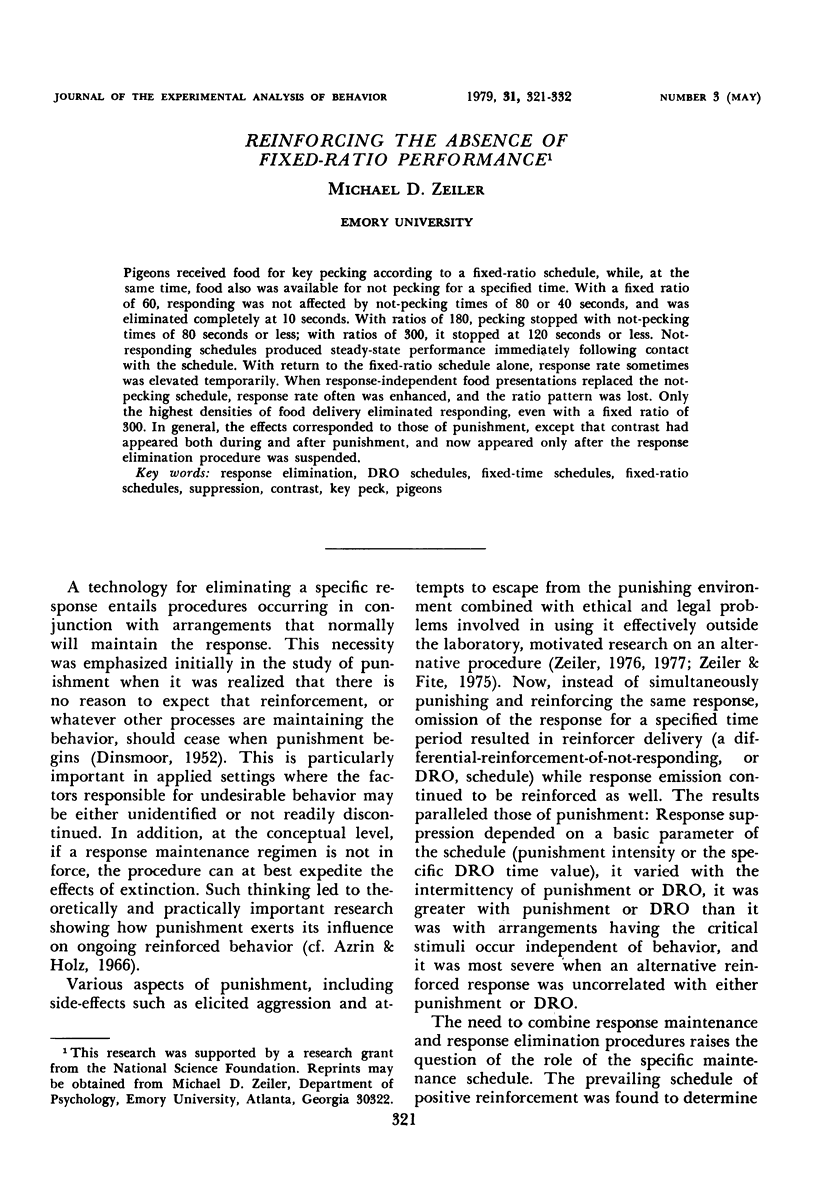
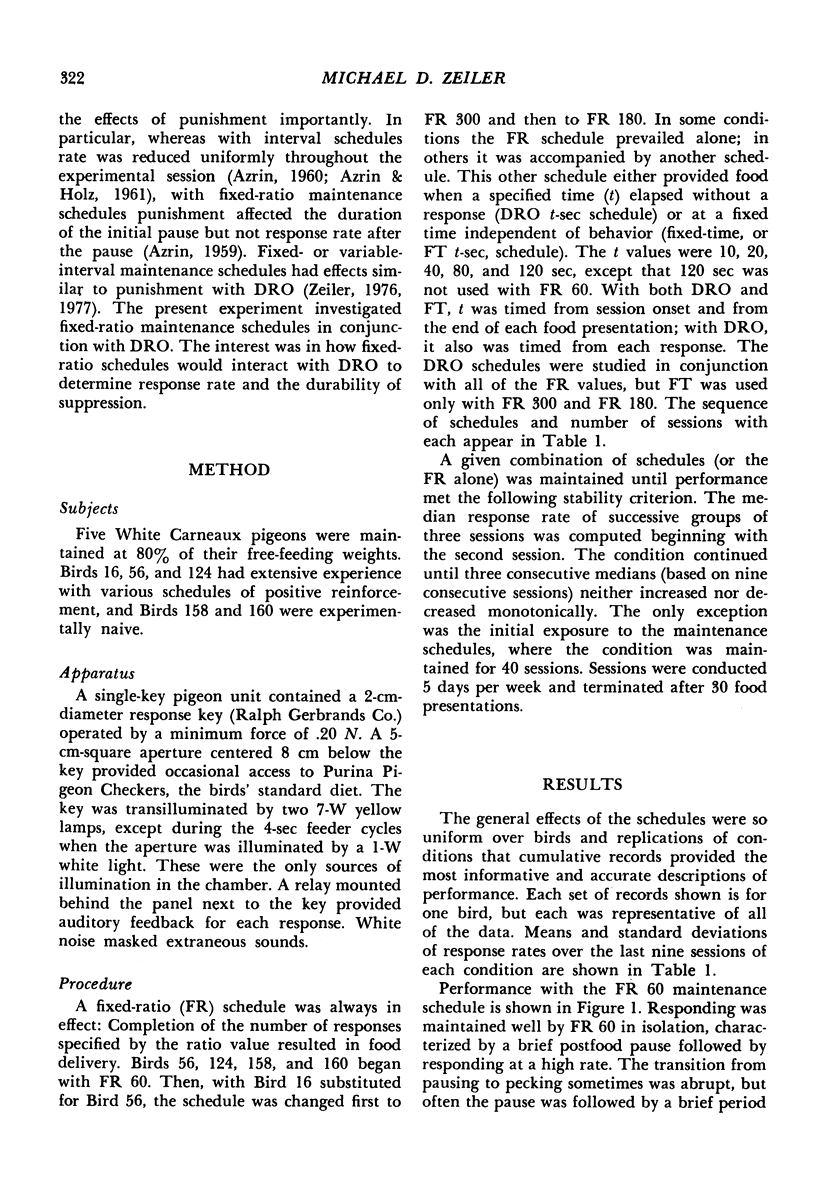

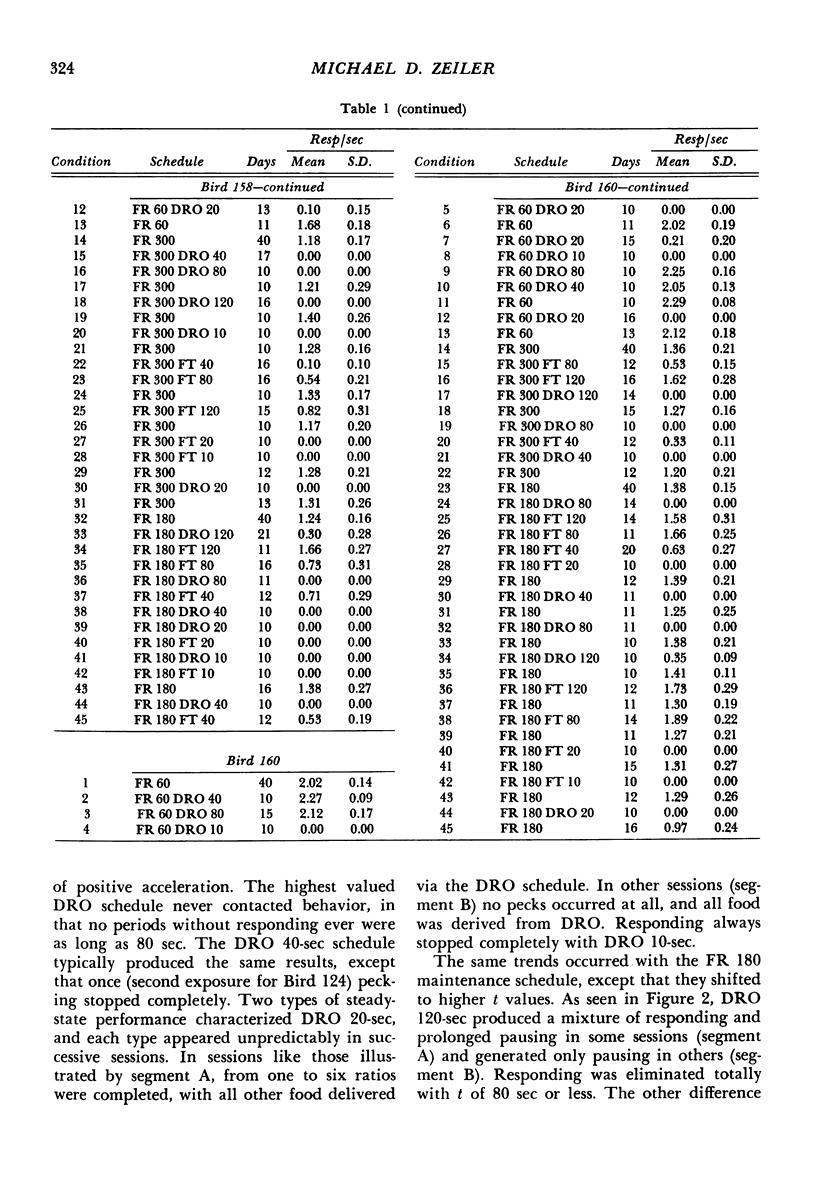
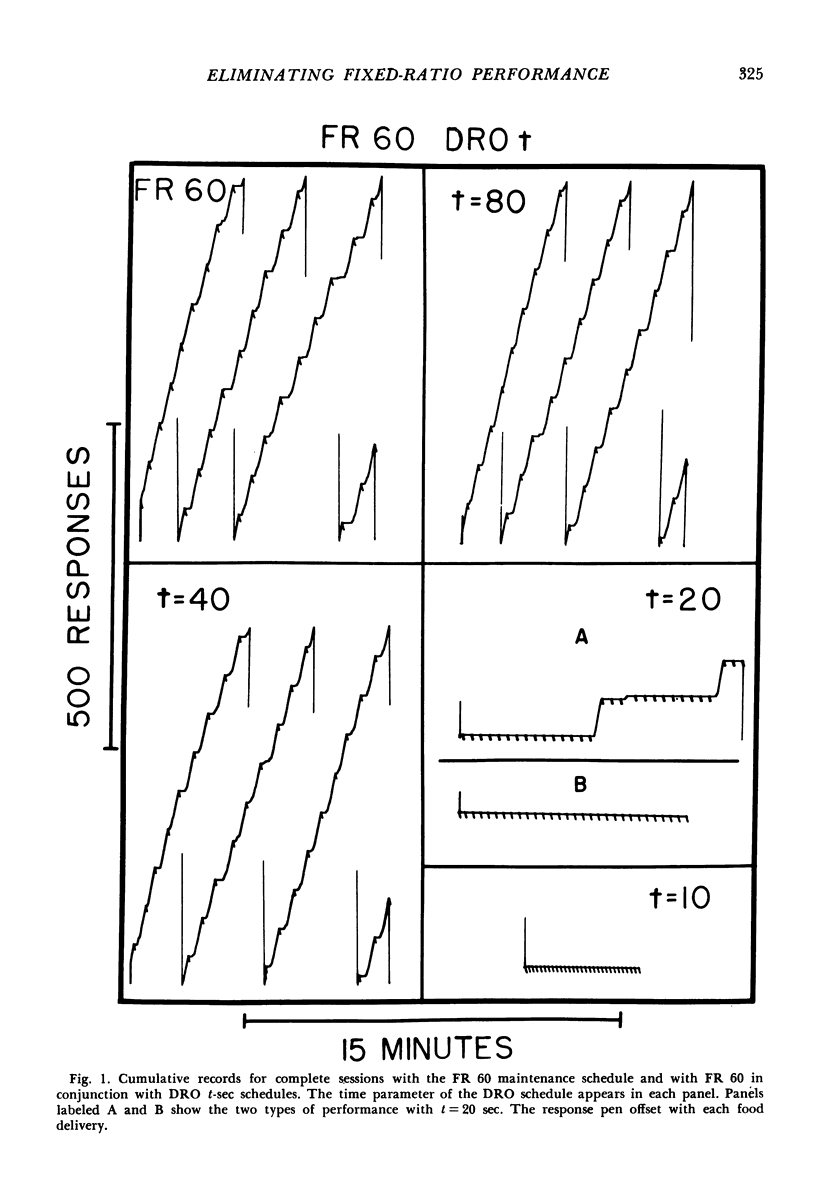



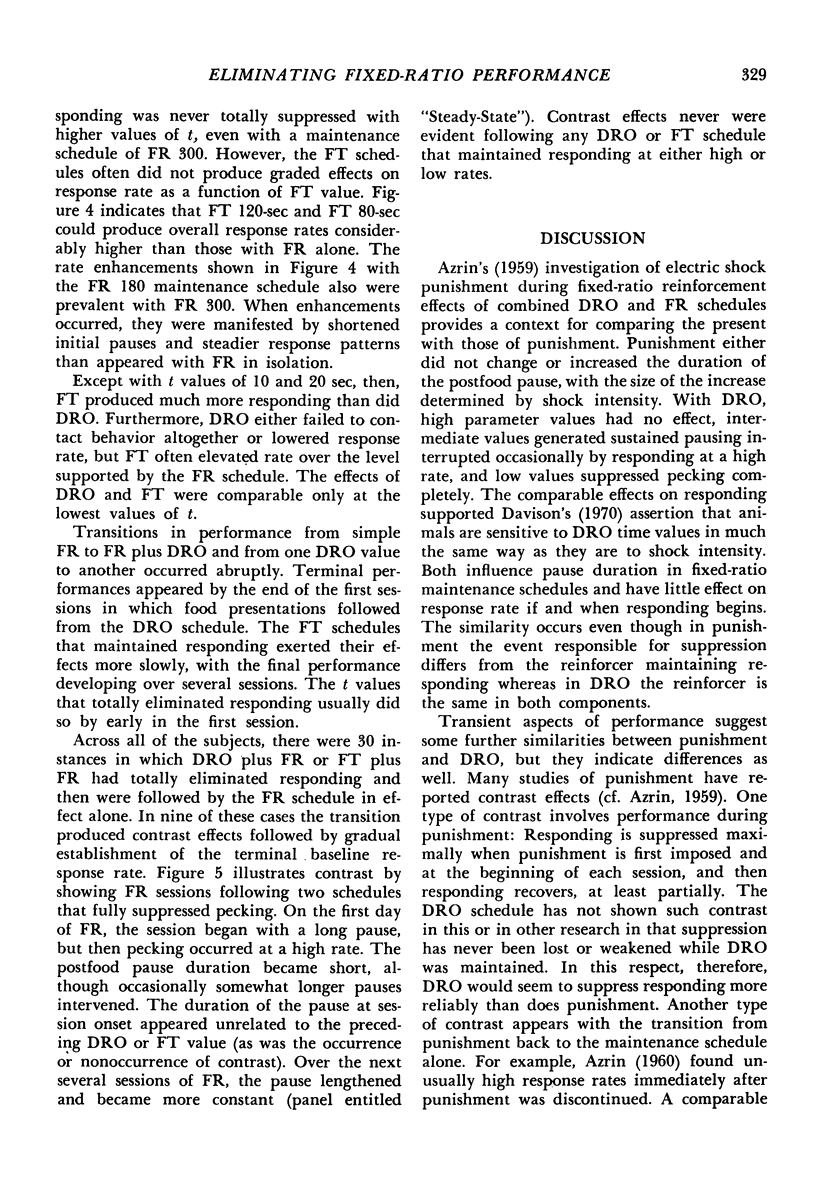

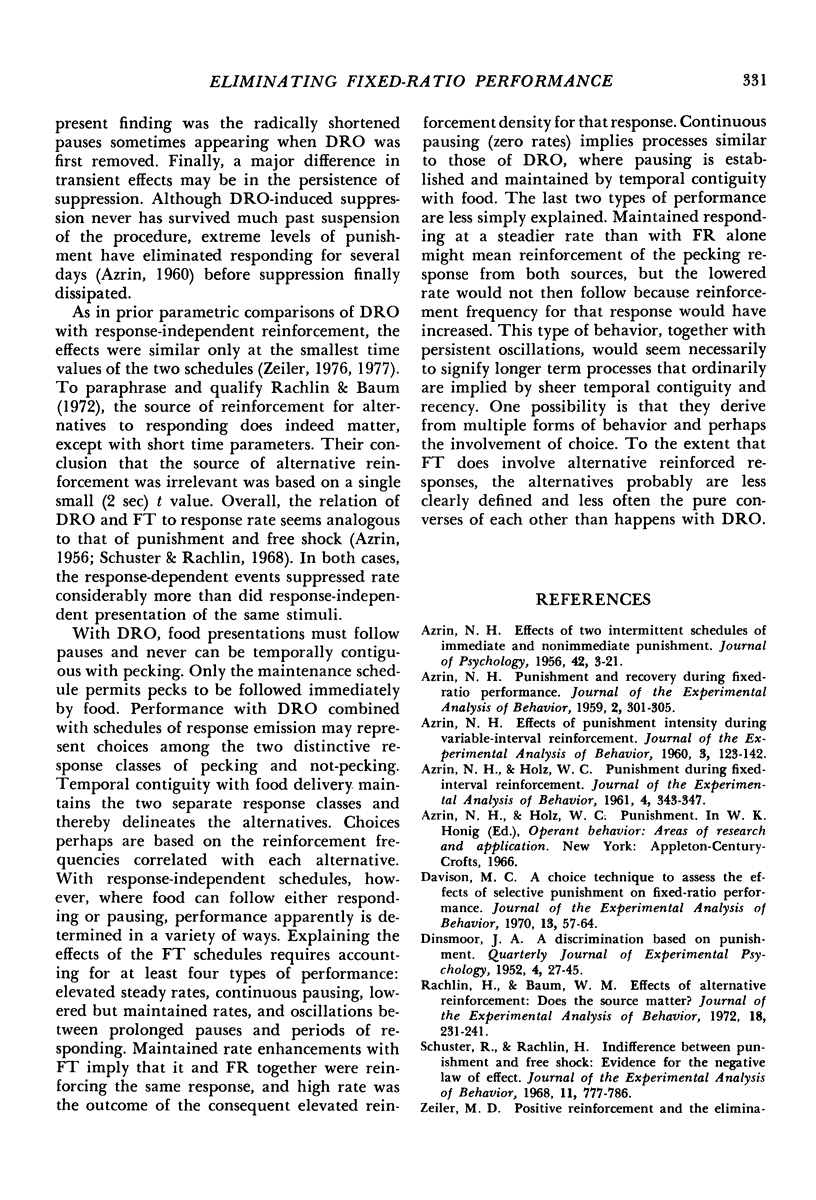
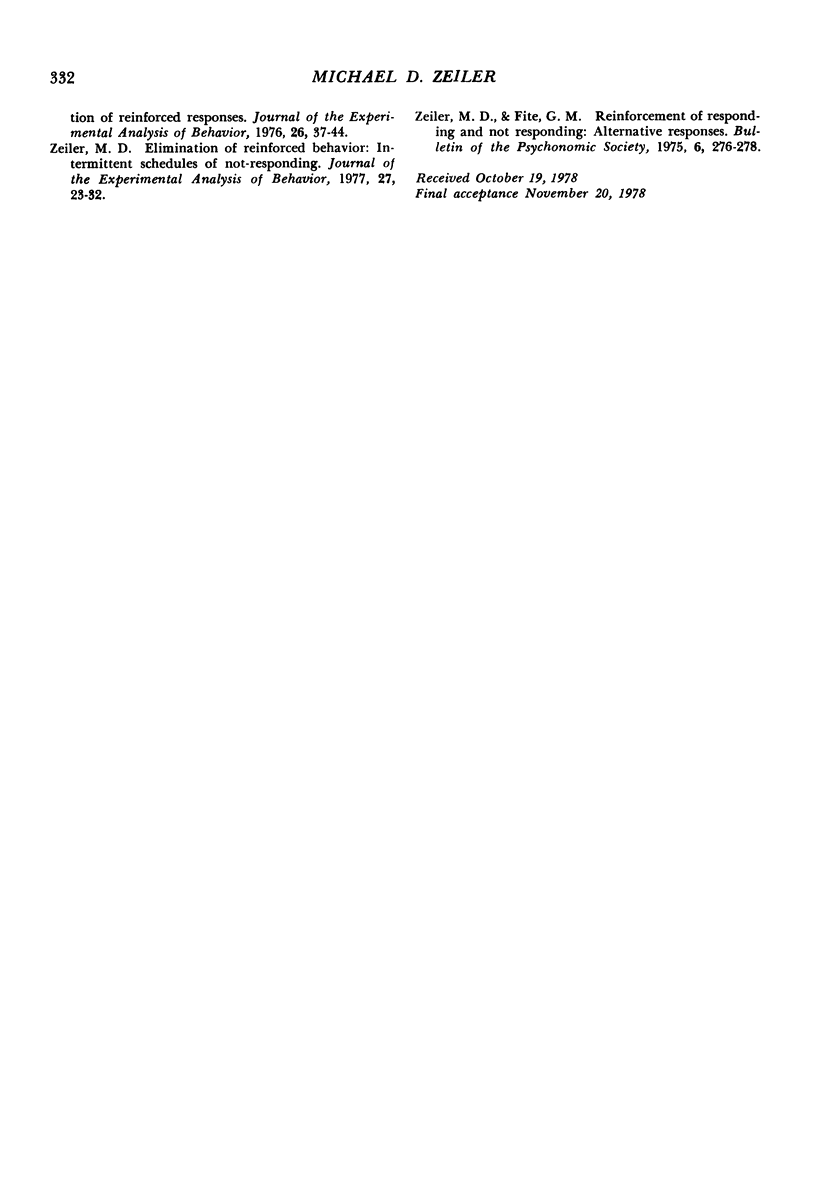
Selected References
These references are in PubMed. This may not be the complete list of references from this article.
- AZRIN N. H. Effects of punishment intensity during variable-interval reinforcement. J Exp Anal Behav. 1960 Apr;3:123–142. doi: 10.1901/jeab.1960.3-123. [DOI] [PMC free article] [PubMed] [Google Scholar]
- AZRIN N. H., HOLZ W. C. Punishment during fixed-interval reinforcement. J Exp Anal Behav. 1961 Oct;4:343–347. doi: 10.1901/jeab.1961.4-343. [DOI] [PMC free article] [PubMed] [Google Scholar]
- AZRIN N. H. Punishment and recovery during fixed-ratio performance. J Exp Anal Behav. 1959 Oct;2:301–305. doi: 10.1901/jeab.1959.2-301. [DOI] [PMC free article] [PubMed] [Google Scholar]
- Davison M. C. A choice technique to assess the effects of selective punishment on fixed-ratio performance. J Exp Anal Behav. 1970 Jan;13(1):57–64. doi: 10.1901/jeab.1970.13-57. [DOI] [PMC free article] [PubMed] [Google Scholar]
- Rachlin H., Baum W. M. Effects of alternative reinforcement: does the source matter? J Exp Anal Behav. 1972 Sep;18(2):231–241. doi: 10.1901/jeab.1972.18-231. [DOI] [PMC free article] [PubMed] [Google Scholar]
- Schuster R., Rachlin H. Indifference between punishment and free shock: evidence for the negative law of effect. J Exp Anal Behav. 1968 Nov;11(6):777–786. doi: 10.1901/jeab.1968.11-777. [DOI] [PMC free article] [PubMed] [Google Scholar]
- Zeiler M. D. Elimination of reinforced behavior: intermittent schedules of not-responding. J Exp Anal Behav. 1977 Jan;27(1):23–32. doi: 10.1901/jeab.1977.27-23. [DOI] [PMC free article] [PubMed] [Google Scholar]
- Zeiler M. D. Positive reinforcement and the elimination of reinforced responses. J Exp Anal Behav. 1976 Jul;26(1):37–44. doi: 10.1901/jeab.1976.26-37. [DOI] [PMC free article] [PubMed] [Google Scholar]


